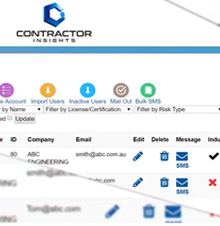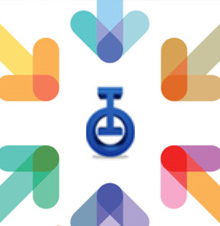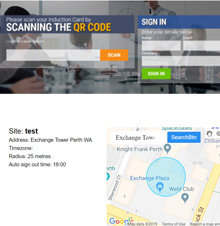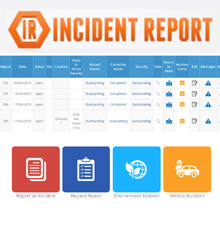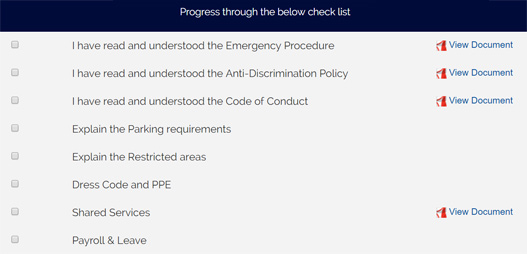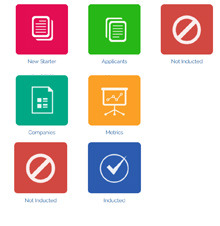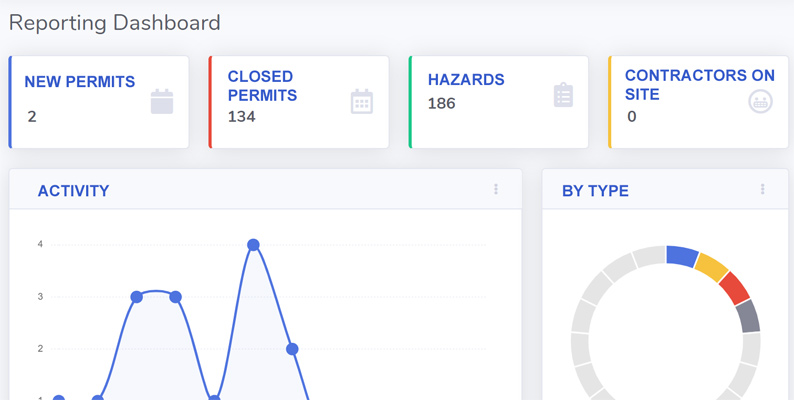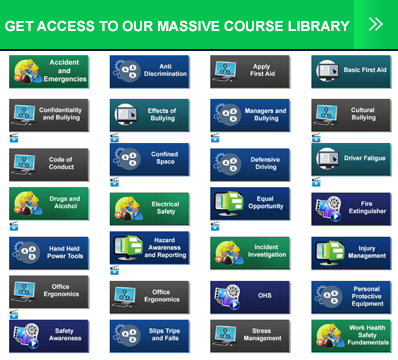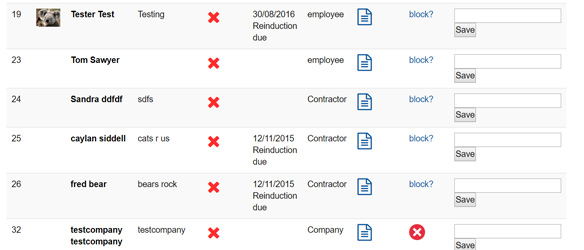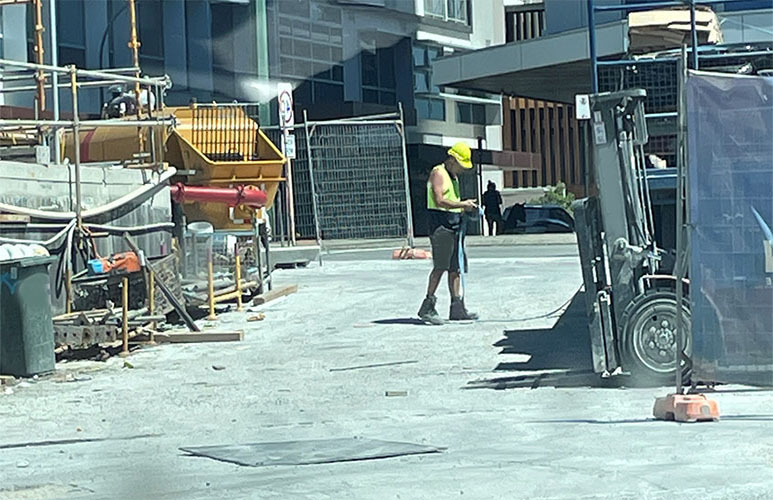SWMS: Safe Work Method Statement Induction Resources
Online Induction >> Safe Work Method StatementsPublished 14/09/2025
 A safe work methods statement (SWMS), is also referred to as a Safe System of Work. It is a document used in high-risk construction sites which sets the highly risky activities carried out on site, their potential hazards, and measures to be implemented to control the risks that may arise from these works.
In other words, the SWMS is an administrative tool used for health and safety measures to diminish risks within the work site. E.g., engineering controls.
Supervisors, managers, and workers use the Safe Work Methods Statement to confirm and monitor the requirement for risk control measures within the workplace.
A safe work methods statement (SWMS), is also referred to as a Safe System of Work. It is a document used in high-risk construction sites which sets the highly risky activities carried out on site, their potential hazards, and measures to be implemented to control the risks that may arise from these works.
In other words, the SWMS is an administrative tool used for health and safety measures to diminish risks within the work site. E.g., engineering controls.
Supervisors, managers, and workers use the Safe Work Methods Statement to confirm and monitor the requirement for risk control measures within the workplace.
Preparation of the SWMS occurs before the commencement of any high-risk construction projects. The principal contractor, sub-contractors, managers, builders and other workers who are involved in the high-risk tasks take part in the creation of the SWMS. This inclusion is vital to help them understand the document itself, and what is required of them to implement and maintain the risk controls during the task.
A SWMS is commonly provided as part of a contractor induction or contractor prequalification and will be managed through contractor management software as part of your ongoing contractor compliance. It may also be checked as part of a contractor sign in system.
Using (SWMS) Safe work method statements with projects
 Not every work within the construction project requires SWMS; the following are examples of the high-risk construction works that need the document;
Not every work within the construction project requires SWMS; the following are examples of the high-risk construction works that need the document; - Work with the risk of a worker falling more than two meters.
- Work or activity with exposure to extreme human-made temperatures.
- Work that is either on or adjacent to railways or road traffic.
- Construction work with the potential risk of drowning on water or other liquids.
- Construction works causing alteration to structures with the danger of collapsing.
- Demolition processes.
- Work carried out near or on a pressurized gas distribution.
- Work that involves the use of explosives, etc.
Safe work method statement management during inductions
You can use your online induction program as a tool to ensure safe work method statements are completed and acknowledged by workers as part of their induction. The information on safe work method statement is shared with workers during induction training or toolbox talk which can be conducted by the principal contractor, contractor or sub-contractor.Importance of safe work method statements
a) To identify the high-risk activities involved within the project.b) To determine the most appropriate workforce and resources necessary for the completion of the task.
c) To assess the most practical control measures.
d) To plan systematically for effective and efficient completion of tasks with minimal risks possible.
Setup a SWMS app workflow
Create a mobile based SWMS workflow using our platform, collect SWMS and setup a digital review and approval system. Enable users to upload via our app or distribute a SWMS project or job specific SWMS link and setup custom review and approval workflows.What is the use of a safe work method statement?
The SWMS is an informational document meant to explain the nature of work and measures to minimize the risks involved. The following is the information covered;- The specific high-risk work involved in the construction project.
- The hazards that relate to the high-risk work and their implication on the health and safety of the workers.
- The precise risk control measures.
- A description of the implementation of risk control measures. And how they will be monitored and reviewed.
Tips to consider when drafting the SWMS
 - Consultation is critical: Engaging with experienced workers will help to gather helpful information that would otherwise be easy to overlook. Also, involving workers during the process, increases their likelihood to share knowledge and implement their tasks per the SWMS.
- Consultation is critical: Engaging with experienced workers will help to gather helpful information that would otherwise be easy to overlook. Also, involving workers during the process, increases their likelihood to share knowledge and implement their tasks per the SWMS.- Proper planning is fundamental: before starting high-risk construction works, a safe work method statement should be ready. The Principal contractor should ensure that the SWMS is in place before the construction works begin to avoid any delays and incidents.
- Regular evaluation and reviewing: The SWMS is supposed to help minimize or completely eradicate risks during construction works. For this reason, regular checks and monitoring will help to seal any loopholes within the process.
- Keep it precise and straight to the point: A SWMS should not be too wordy. Instead, use clear, short and focused points to describe the potential hazards and measures to take to curb them. It will make it easy to understand, implement and monitor for its users.
- Use illustrations if necessary: A SWMS should be easy to translate for everyone on site. In case the workers have a language barrier, the use of pictures and diagrams would be paramount to help them understand the document.
- Acknowledgment: Every worker must acknowledge that they have read and understood the SWMS which is usually done by appending their names and signatures at the end of the document. It is necessary for every worker to understand the risks involved in the work they are doing.
- Random checks: spontaneous inspections in the workplace and also questioning workers on the control measures will ensure that everyone within site is on the same page concerning the risks and risk controls in place to help complete the task. And if not, you will be able to identify and address the gaps identified during the checks.
Different work sites have different circumstances; and for this reason, it is important to tailor a safe work method statement that is specific to the project in question. By doing this, you will ensure that only the relevant information is covered in the SWMS to avoid unnecessary details.
High-risk construction works must always be carried out in accordance to the safe work methods statement (SWMS); failure to which the project must stop until necessary measures are taken to ensure secure continuity of the job in the most reliable way possible. In case of identification of a better and safer way of carrying out the high-risk task; in the course of the project, the SWMS should then be reviewed to accommodate the new more reliable methods.
SWMS should be easily accessible at all times; for audit, review or reference. It can be either in the form of hard copy or soft copy depending on the nature of the project. Should the SWMS be revised, all copies should be available until the successful completion of the task.




